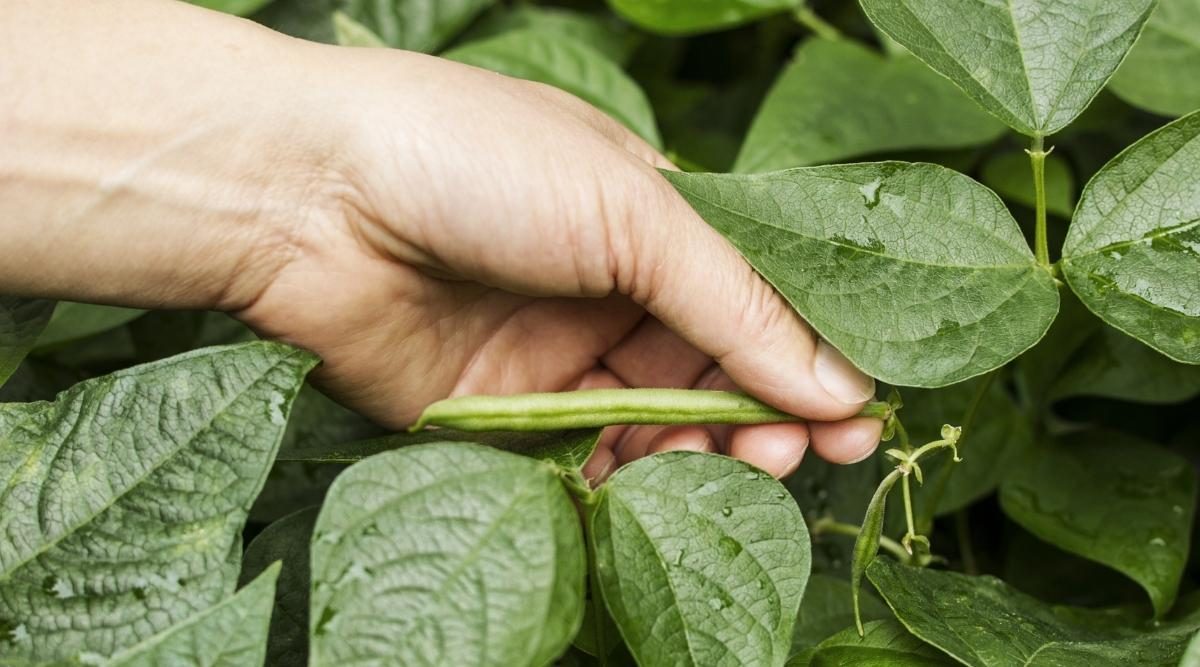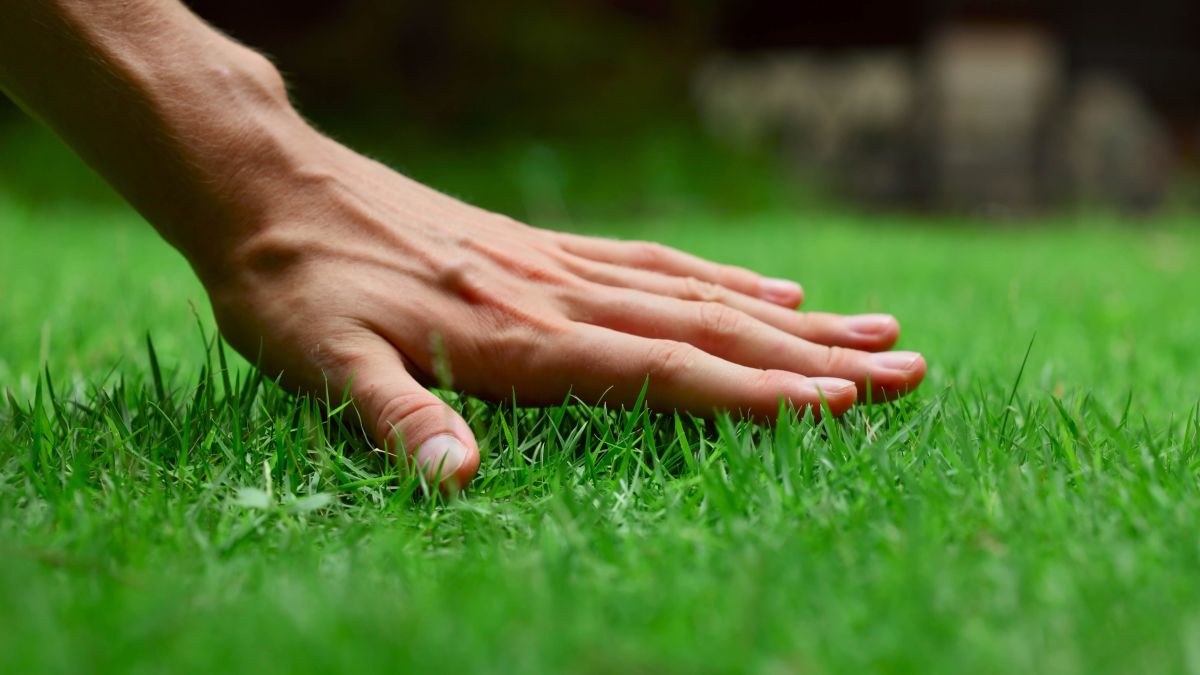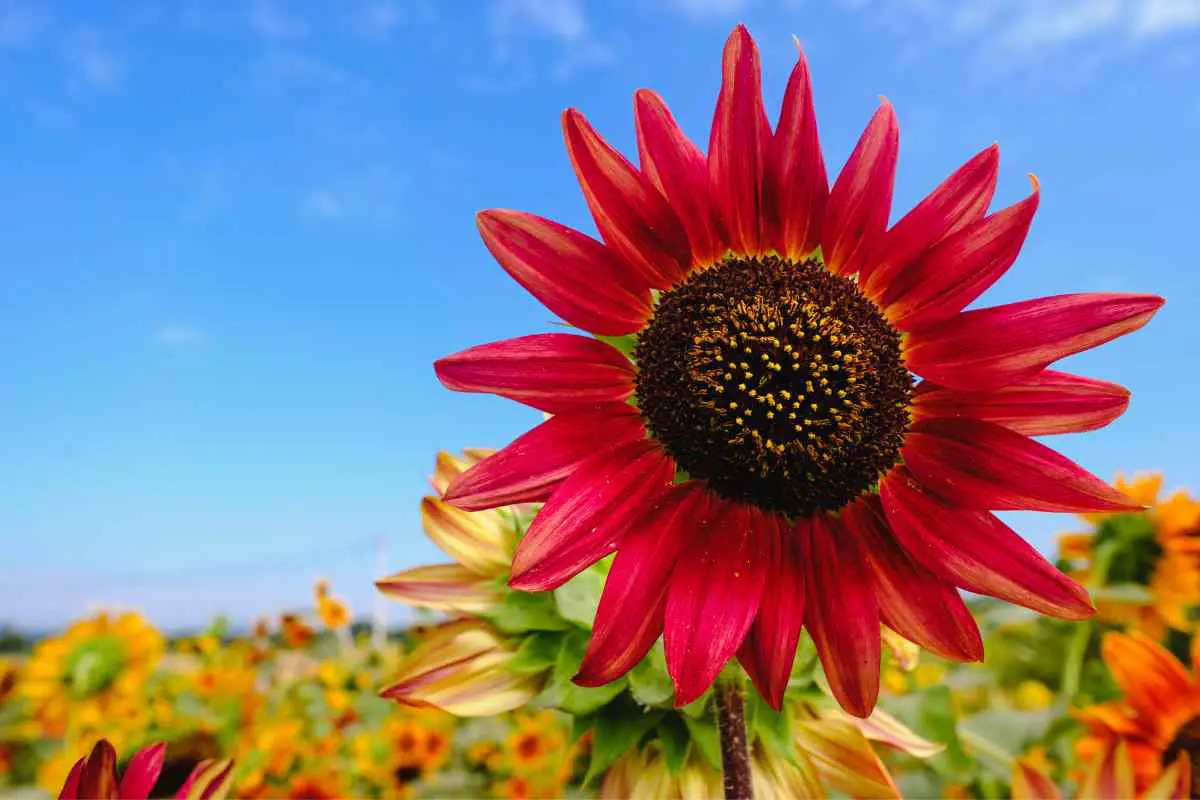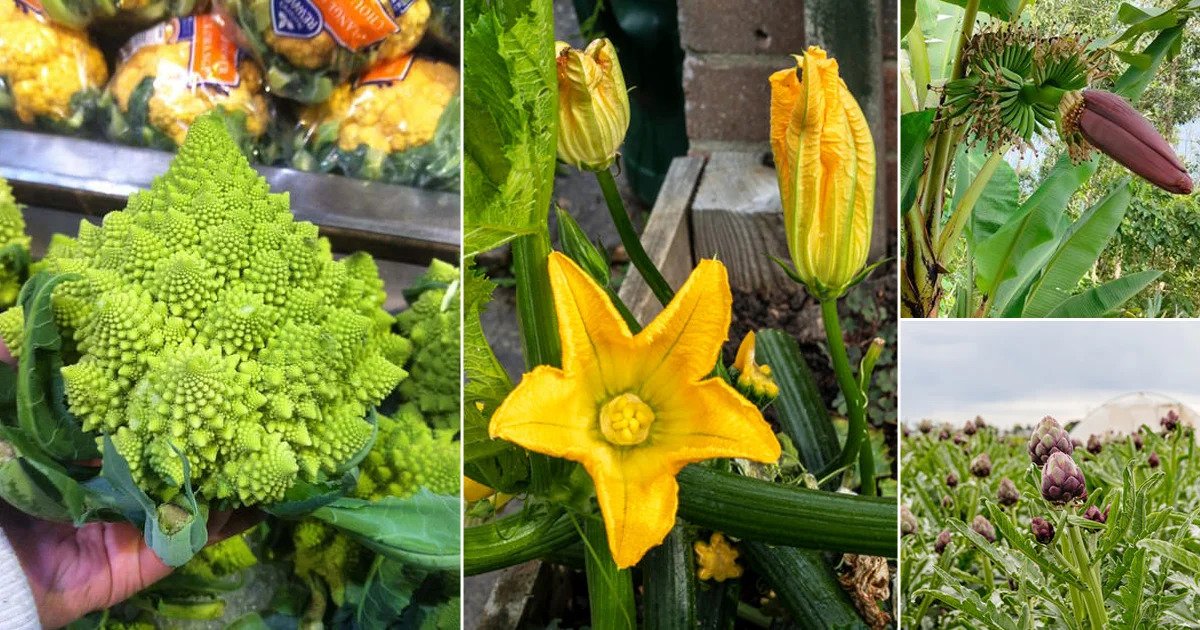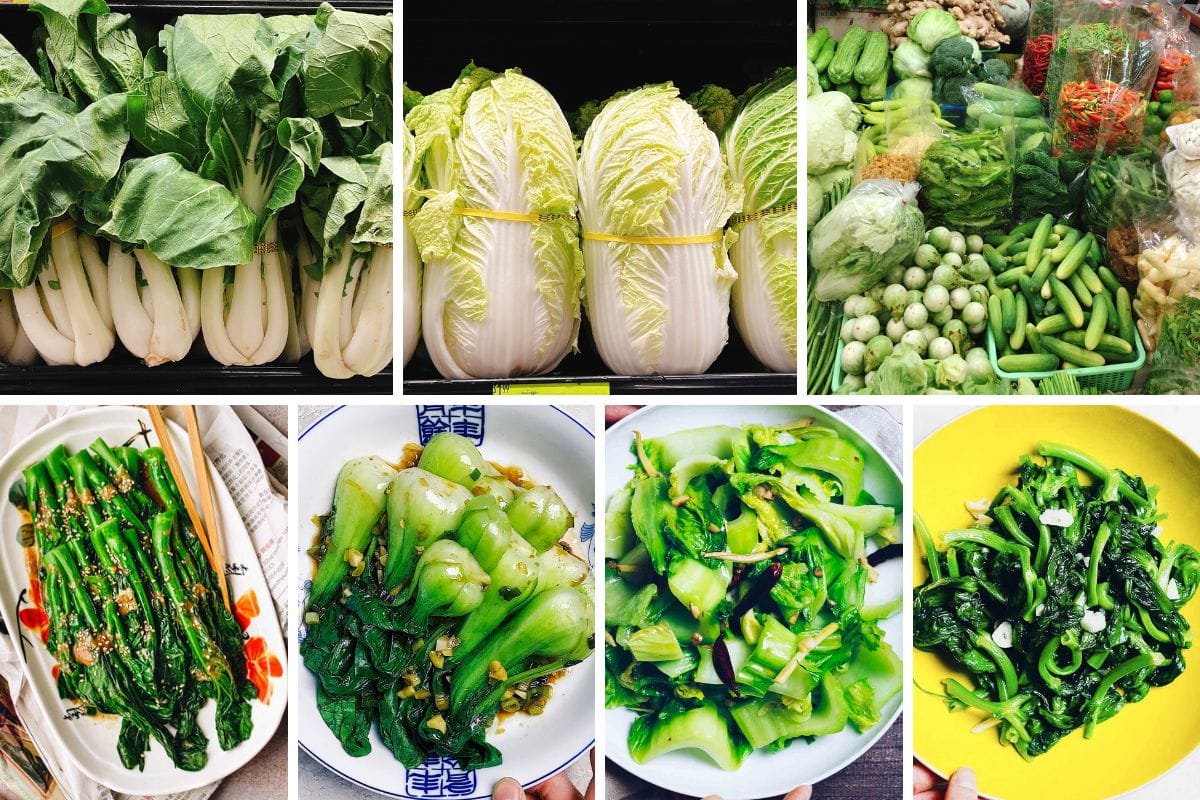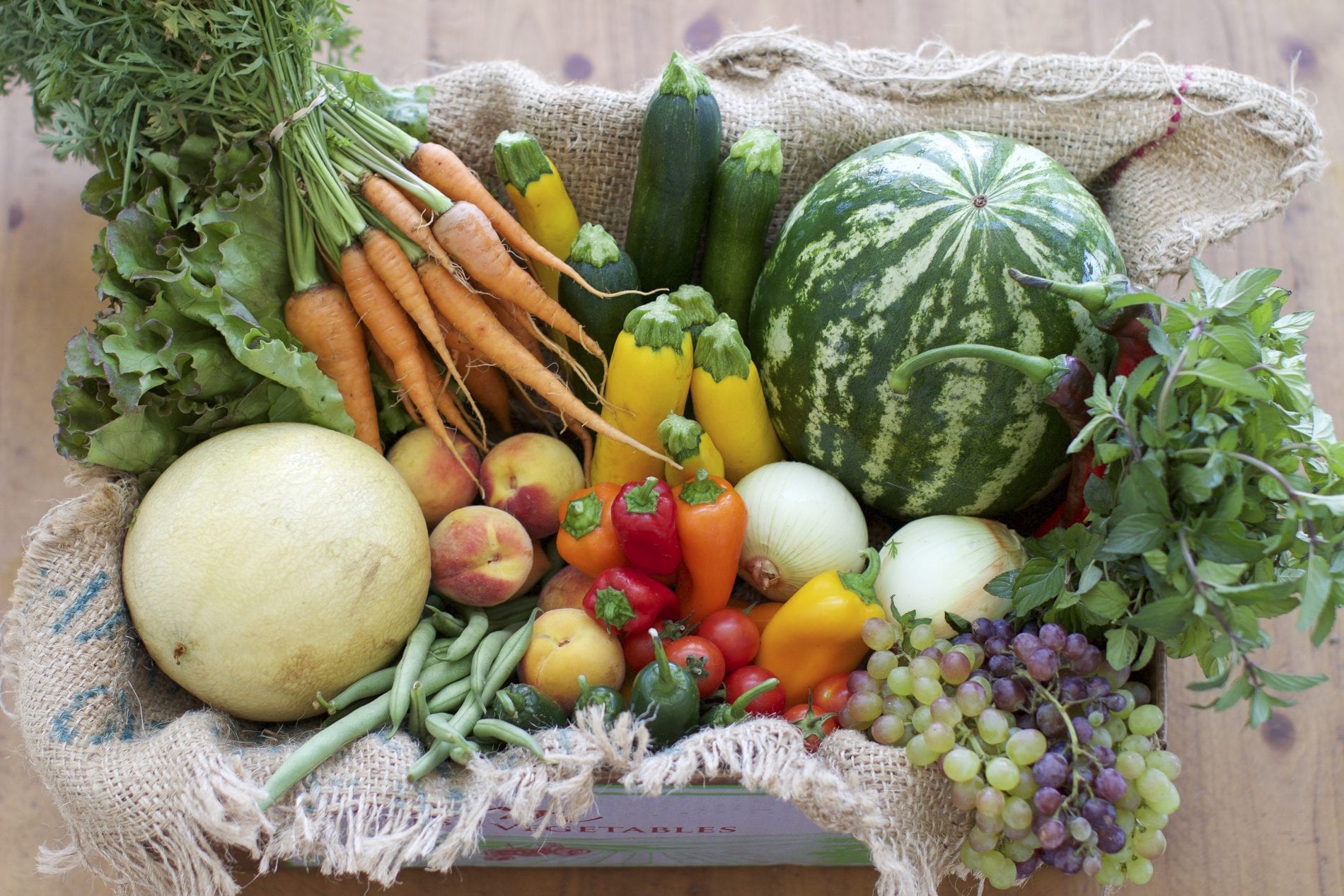Home>Types of Gardening>Edible Gardening>What Are Some Green Vegetables
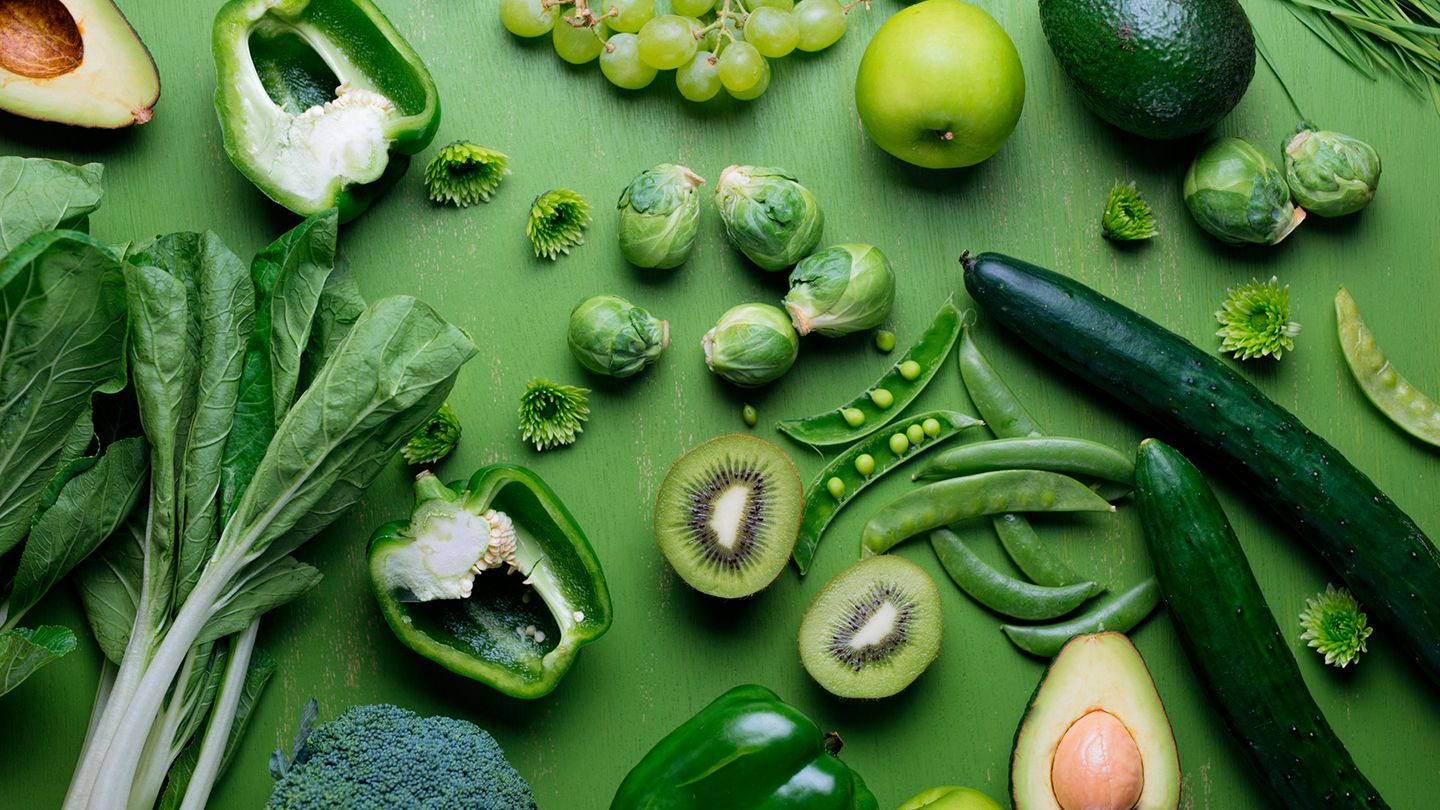

Edible Gardening
What Are Some Green Vegetables
Modified: January 22, 2024
Discover the benefits of edible gardening and learn about some of the best green vegetables to grow in your own backyard. Start your journey towards a sustainable and nutritious lifestyle today.
(Many of the links in this article redirect to a specific reviewed product. Your purchase of these products through affiliate links helps to generate commission for Chicagolandgardening.com, at no extra cost. Learn more)
Table of Contents
Introduction
Welcome to the wonderful world of edible gardening! Growing your own food can be a fulfilling and rewarding experience. Not only does it provide you with fresh and healthy produce, but it also allows you to connect with nature and enjoy the satisfaction of harvesting your own crops. If you’re considering starting an edible garden, one of the first things to consider is what types of vegetables to grow. In this article, we will explore some of the top green vegetables that are perfect for edible gardening.
Green vegetables are not only packed with essential nutrients, but they also add vibrant color to your garden and plate. Whether you have a small backyard, a sunny balcony, or even just a windowsill, there are plenty of green vegetables that can thrive in various growing conditions.
In the following sections, we will delve into the specifics of some of these green vegetables, including tips on how to grow them, their nutritional benefits, and some delicious recipe ideas to make the most of your bountiful harvest.
Spinach
One of the quintessential green vegetables that can easily be grown in your edible garden is spinach. This leafy green is not only delicious but also incredibly nutritious. Spinach is packed with vitamins A, C, and K, as well as iron, calcium, and folate.
When it comes to growing spinach, it thrives in cooler climates, making it a great option for spring and fall gardens. It prefers well-drained soil with plenty of organic matter. Sow the seeds directly in the garden bed, about 1 inch deep and 2 to 3 inches apart. Ensure the soil stays consistently moist and provide shade during hot summer months to prevent bolting.
Harvesting spinach is a breeze. Simply pick the outer leaves when they reach a desirable size, leaving the inner leaves to continue growing. Spinach can be enjoyed raw in salads, sautéed as a side dish, or added to soups and smoothies for an extra boost of nutrients.
Not only is spinach versatile in the kitchen, but it is also an excellent companion plant. Its dense foliage provides shade and helps to suppress weeds, while attracting beneficial insects to your garden.
With its rich green color and incredible health benefits, spinach is a must-have in any edible garden.
Broccoli
Broccoli is a nutrient-dense green vegetable that is not only delicious but also easy to grow in your edible garden. Packed with vitamins A, C, and K, as well as fiber and antioxidants, broccoli is a powerhouse of nutrition.
To grow broccoli, start by planting seeds indoors about 6-8 weeks before the last frost. Once the seedlings have grown a few inches tall, transplant them into your garden bed, spacing them about 18 inches apart. Broccoli prefers full sun and well-drained soil enriched with organic matter.
Ensure that the soil stays consistently moist and provide regular watering, especially during dry spells. It is important to keep an eye out for common pests such as aphids and cabbage worms, which can damage the broccoli plants.
When it comes to harvesting broccoli, you have two options. You can either harvest the whole head of broccoli when it reaches maturity or adopt a cut-and-come-again method. The cut-and-come-again method involves harvesting the main head of broccoli while leaving the side shoots to continue growing and producing smaller heads.
Broccoli can be steamed, roasted, stir-fried, or even enjoyed raw in salads. Its versatile nature makes it a popular ingredient in a variety of dishes.
Aside from its culinary uses, broccoli also offers some important benefits to your garden. It is a great companion plant, attracting beneficial insects like ladybugs and lacewings, which help control pests and pollinate other plants.
Add the nutrient-packed and vibrant broccoli to your edible garden for a delicious and healthy addition.
Kale
Kale, often referred to as a superfood, is a leafy green vegetable that is not only highly nutritious but also a beautiful addition to any edible garden. Packed with vitamins A, C, and K, as well as minerals like calcium and iron, kale is a nutritional powerhouse.
When it comes to growing kale, it is incredibly versatile and can thrive in both cool and warm climates. It is best to sow the seeds directly in the garden bed, about ¼ inch deep and 12-18 inches apart. Kale prefers well-drained soil rich in organic matter.
Kale is known for its hardy nature and tolerance to frost. In fact, its flavor tends to improve after a light frost. However, it is important to provide some shade during extremely hot summer months to prevent the leaves from becoming bitter.
Harvesting kale is a continuous process. You can start picking the outer leaves when they are about 6-8 inches long, allowing the inner leaves to continue growing. This cut-and-come-again method ensures a steady supply of fresh kale throughout the growing season.
Kale can be enjoyed in a variety of ways, such as sautéed, steamed, or even baked into crispy kale chips. Its robust flavor and texture make it a popular choice for salads, smoothies, and soups.
Aside from being a nutritional powerhouse, kale is also a visually stunning addition to any garden. With its curly or ruffled leaves in various shades of green, purple, or even blue, kale can add an ornamental touch to your edible garden.
Cultivating kale not only provides you with a consistent supply of nutritious greens but also attracts beneficial insects, such as bees and butterflies, to your garden.
Consider growing kale in your edible garden to enjoy its health benefits and enhance the beauty of your outdoor space.
Peas
Peas are a delightful addition to any edible garden, known for their sweet flavor and versatility in various dishes. These green vegetables are not only delicious but also packed with vitamins A, C, and K, as well as fiber and antioxidants.
Growing peas requires a trellis or support system, as they are climbing plants that need something to cling onto as they grow. Sow the seeds directly into well-drained soil, spacing them about 2 inches apart. Peas prefer cooler weather, so it’s best to plant them in early spring or fall when the temperatures are mild.
Peas require regular watering, especially during dry spells, to ensure the soil remains consistently moist. It’s important to provide support for the pea plants by installing a trellis or using stakes and twine to help them climb as they grow.
When it comes to harvesting peas, you have two options. You can harvest them as sugar snap peas when the pods are plump and the peas inside are still tender. Alternatively, you can wait for the peas to fully mature and harvest them as shelling peas by allowing the pods to dry on the vine.
Peas can be enjoyed in a variety of ways. They can be eaten fresh off the vine, added to salads, stir-fries, or even roasted for a crispy snack. They can also be blanched and frozen for future use.
In addition to being delicious and nutritious, peas are also beneficial to your garden. They are nitrogen-fixing plants, meaning they have the ability to convert atmospheric nitrogen into a form that can be used by other plants. This improves soil fertility and benefits neighboring plants.
Adding peas to your edible garden not only provides you with a tasty and versatile vegetable but also contributes to the overall health of your garden ecosystem.
Green Beans
Green beans, also known as snap beans or string beans, are a popular choice for edible gardens due to their ease of cultivation and delicious taste. These tender and crunchy green vegetables are not only satisfying to eat but also packed with vitamins A, C, and K, as well as fiber and folate.
When it comes to growing green beans, they thrive in warm weather and full sun. Sow the seeds directly into the garden bed, about 1 inch deep and 4-6 inches apart. Green beans prefer well-drained soil with organic matter. It’s important to provide support for the plants, such as using stakes or a trellis, as they are climbers.
Water the green bean plants regularly, keeping the soil consistently moist. It’s important to avoid overhead watering as this can increase the risk of disease. Mulching around the plants can help retain moisture and suppress weeds.
Harvesting green beans is a rewarding experience. The beans can be picked when they are young and tender, typically around 3-4 inches long. It’s important to harvest regularly to promote continuous production. If left on the plant for too long, the beans can become tough and lose their delightful flavor and texture.
Green beans can be enjoyed in a variety of ways. They can be steamed, sautéed, stir-fried, or added to salads or vegetable medleys. They can also be preserved through canning or freezing for enjoyment throughout the year.
In addition to being a delicious vegetable, green beans also provide benefits to your garden. They are nitrogen-fixing plants, adding nutrients to the soil and benefiting neighboring plants. Their foliage also acts as a natural weed suppressor.
With their vibrant green color and delectable taste, green beans are a fantastic addition to any edible garden.
Brussels Sprouts
Brussels sprouts are a fantastic addition to any edible garden, known for their distinctive flavor and nutritional benefits. These small, cabbage-like vegetables are not only delicious but also packed with vitamins A, C, and K, as well as fiber and antioxidants.
To grow Brussels sprouts, start by planting seedlings in early spring or late summer, as they prefer cooler temperatures. Space the plants about 18-24 inches apart, as they require ample room to grow and develop their sprouts. Brussels sprouts thrive in well-drained soil with plenty of organic matter.
Regular watering is key to healthy Brussels sprout plants, especially during dry spells. It’s important to provide consistent moisture without overwatering, as excessive water can lead to disease and rot. Mulching around the plants helps retain moisture and suppress weeds.
When it comes to harvesting Brussels sprouts, the sprouts will start forming in the leaf axils of the plant’s stem. Begin harvesting the sprouts from the bottom of the stem, picking them when they reach a desired size of about 1-2 inches in diameter. Remove the sprouts by twisting or cutting them off with a sharp knife.
Brussels sprouts can be enjoyed in a variety of ways. They can be roasted, sautéed, steamed, or even used in stir-fries and gratins. Their unique flavor adds depth to any dish and pairs well with other ingredients like bacon, garlic, and parmesan cheese.
Aside from their culinary uses, Brussels sprouts also offer benefits to your garden. They are long-lasting plants that can be harvested over an extended period of time, providing a continuous supply of fresh sprouts. Furthermore, their tall and leafy structure can provide shade and protection for neighboring plants.
Growing Brussels sprouts in your edible garden not only gives you access to delectable and nutritious vegetables but also adds a touch of visual interest with their neat rows of compact sprouts.
Asparagus
Asparagus is a unique and delicious green vegetable that can be a valuable addition to your edible garden. Known for its tender spears and distinct flavor, asparagus is not only a culinary delight but also packed with vitamins A, C, E, and K, as well as folate and fiber.
When it comes to growing asparagus, it requires a bit of patience and planning. Asparagus is a perennial plant, meaning it can live and produce for many years. It’s best to start with young asparagus crowns, which are available for purchase at nurseries or garden centers.
Choose a well-drained and sunny spot in your garden for planting asparagus. Prepare the soil by removing any weeds and adding organic matter such as compost or aged manure. Dig trenches about 12 inches deep and 18 inches wide, spacing them about 4-5 feet apart. Place the asparagus crowns at the bottom of the trench, spacing them about 18 inches apart, and cover them with a few inches of soil.
Asparagus requires consistent watering, especially during the establishment phase. It’s important to keep the soil evenly moist, but not waterlogged, to prevent rot and disease. Mulching around the plants can help retain moisture and suppress weed growth.
In the first year, it’s important to resist the temptation to harvest the asparagus spears. This allows the plants to establish a strong root system. In the second year and onwards, you can start harvesting the spears when they reach a height of about 6-8 inches. Use a sharp knife or scissors to cut the spears at ground level.
Asparagus can be enjoyed in various ways. It can be steamed, sautéed, roasted, or grilled. The tender spears lend themselves well to being added to salads, pasta dishes, or enjoyed as a side vegetable.
In addition to its culinary appeal, asparagus can also serve as an ornamental plant with its lush green foliage and delicate fern-like appearance. Its tall and feathery fronds can add an elegant touch to your garden landscape.
Growing asparagus may require some patience, but the reward of fresh and flavorful spears for years to come makes it worth the wait.
Celery
Celery is a versatile and nutritious green vegetable that can be grown in your edible garden. With its crisp texture and unique flavor, celery is not only a great addition to soups, salads, and stir-fries but also packed with vitamins A, C, and K, as well as fiber and antioxidants.
When it comes to growing celery, it requires a bit of extra care and attention compared to other vegetables. Celery thrives in cool weather and requires a long growing season, so it’s best to start the seeds indoors about 10-12 weeks before the last frost. Once the seedlings have grown a few inches tall, transplant them into the garden bed, spacing them about 6-8 inches apart.
Celery prefers rich, well-drained soil that is high in organic matter. It requires consistent moisture but must be carefully watered to prevent overwatering and waterlogging. To promote tender stalk growth, celery can be blanched by wrapping the stalks with paper or tying them together with twine.
Harvesting celery can be done when the stalks are about 8-12 inches tall. Cut the stalks at the base using a sharp knife, taking care not to damage the surrounding plant. Celery leaves can also be used as an herb for flavoring dishes.
Celery can be enjoyed in a variety of ways. It can be eaten raw as a crunchy and refreshing snack, added to salads, used as a flavoring ingredient in soups and stews, or even juiced for a healthy beverage option.
In addition to its culinary uses, celery can also attract beneficial insects such as bees and butterflies to your garden. It can also serve as a natural repellent for certain pests, making it a great companion plant for other vegetables.
Growing celery requires some patience and careful maintenance, but the reward of fresh and flavorful stalks makes it a worthwhile addition to your edible garden.
Zucchini
Zucchini is a versatile and prolific green vegetable that can be a delightful addition to your edible garden. With its mild flavor and tender texture, zucchini is not only delicious but also packed with vitamins A, C, and K, as well as fiber and antioxidants.
When it comes to growing zucchini, they are relatively easy to cultivate, making them suitable for gardeners of all levels. Start by sowing the seeds directly into the garden bed after the last frost, planting them about 1 inch deep and spacing them 2-3 feet apart. Zucchini plants thrive in full sun and well-drained soil with plenty of organic matter.
Regular watering is essential for healthy zucchini plants. Keep the soil consistently moist, but be cautious not to overwater, as this can lead to rot and fungus issues. Mulching around the plants helps retain moisture and suppress weeds, while also providing insulation to the roots.
Harvesting zucchini is an exciting process. The best time to pick zucchini is when they are young and tender, about 6-8 inches long. Use a sharp knife or scissors to cut the zucchini from the stem, taking care not to damage the plant. Regular harvesting encourages more fruit production.
Zucchini can be enjoyed in a variety of ways. It can be sautéed, grilled, baked, or even shredded and added to baked goods like bread and muffins. It is a versatile vegetable that can be used as a side dish, added to pasta dishes, or even used as a base for zoodles, a healthy alternative to noodles.
In addition to its culinary uses, zucchini plants also provide benefits to your garden. They are heavy feeders, meaning they require nutrient-rich soil. Planting zucchini can improve the fertility of your garden bed. The large and vibrant leaves of the zucchini plant also provide shade and help suppress weed growth.
Add zucchini to your edible garden for a bountiful harvest of this versatile and nutritious vegetable.
Cucumber
Cucumbers are a refreshing and versatile addition to any edible garden. With their crisp texture and subtle flavor, cucumbers are not only delicious but also packed with vitamins A, C, and K, as well as hydrating properties.
When it comes to growing cucumbers, they thrive in warm weather and plenty of sunlight. Start by planting cucumber seeds or transplants in well-drained soil, spacing them about 12 inches apart. If you have limited space, you can also grow cucumbers vertically using trellises or stakes to save space.
Consistent watering is crucial for growing healthy cucumbers. Cucumbers have high water content and require regular moisture to prevent bitterness and improve fruit quality. Mulching around the plants can help retain moisture, keep the soil cool, and suppress weed growth.
Cucumbers can be harvested when they are at the desired size for their variety. Pick them when they are firm and have reached the appropriate length, usually around 6-8 inches. Regular harvesting encourages continuous fruit production.
Cucumbers can be enjoyed in various ways. They can be eaten fresh in salads, sliced for sandwiches, pickled for preserving, or even used in refreshing drinks and smoothies. Their versatility makes them a staple in many delicious recipes.
Aside from being a tasty vegetable, cucumbers also offer benefits to your garden. They can act as a ground cover, providing shade and reducing moisture loss in the soil. Cucumber plants also attract pollinators such as bees, which help in the overall health and productivity of your garden.
Whether you have a small balcony or a spacious garden, cucumbers are a rewarding vegetable to grow. With their crisp texture and cooling properties, they are a delightful addition to your edible garden.
Conclusion
Cultivating an edible garden is a fulfilling and rewarding endeavor, allowing you to connect with nature and enjoy the fruits of your labor. The world of green vegetables offers a wide range of options that are not only delicious but also packed with essential nutrients. By incorporating some of the top green vegetables into your garden, you can enhance your culinary creations and improve your overall well-being.
Spinach, with its nutrient-dense leaves, is a great choice for its versatility and ease of cultivation. Broccoli, kale, and Brussels sprouts offer flavorful options that provide health benefits and can be grown in various climates. Peas and green beans bring fresh and vibrant flavors to your plate, while asparagus adds a touch of elegance to any dish. Celery offers a unique taste and its own set of health benefits, while zucchini and cucumbers provide refreshing options for a variety of meals.
When embarking on your edible gardening journey, it’s important to consider the specific growing requirements of each vegetable, such as soil conditions, watering needs, and sunlight preferences. By providing the optimal growing conditions for these green vegetables, you can ensure a successful harvest and abundant produce.
Not only do these green vegetables provide delicious and nutritious additions to your meals, but they also contribute to the overall health and vitality of your garden. Many of these vegetables serve as companion plants, attracting beneficial insects to pollinate other plants and control pests, while others improve soil fertility.
So, whether you have a small plot of land or a few pots on your balcony, consider incorporating these green vegetables into your edible garden. Enjoy the satisfaction of growing your own food, embrace the taste of freshness in your dishes, and revel in the joys of nurturing and harvesting your own crops. Happy gardening!
